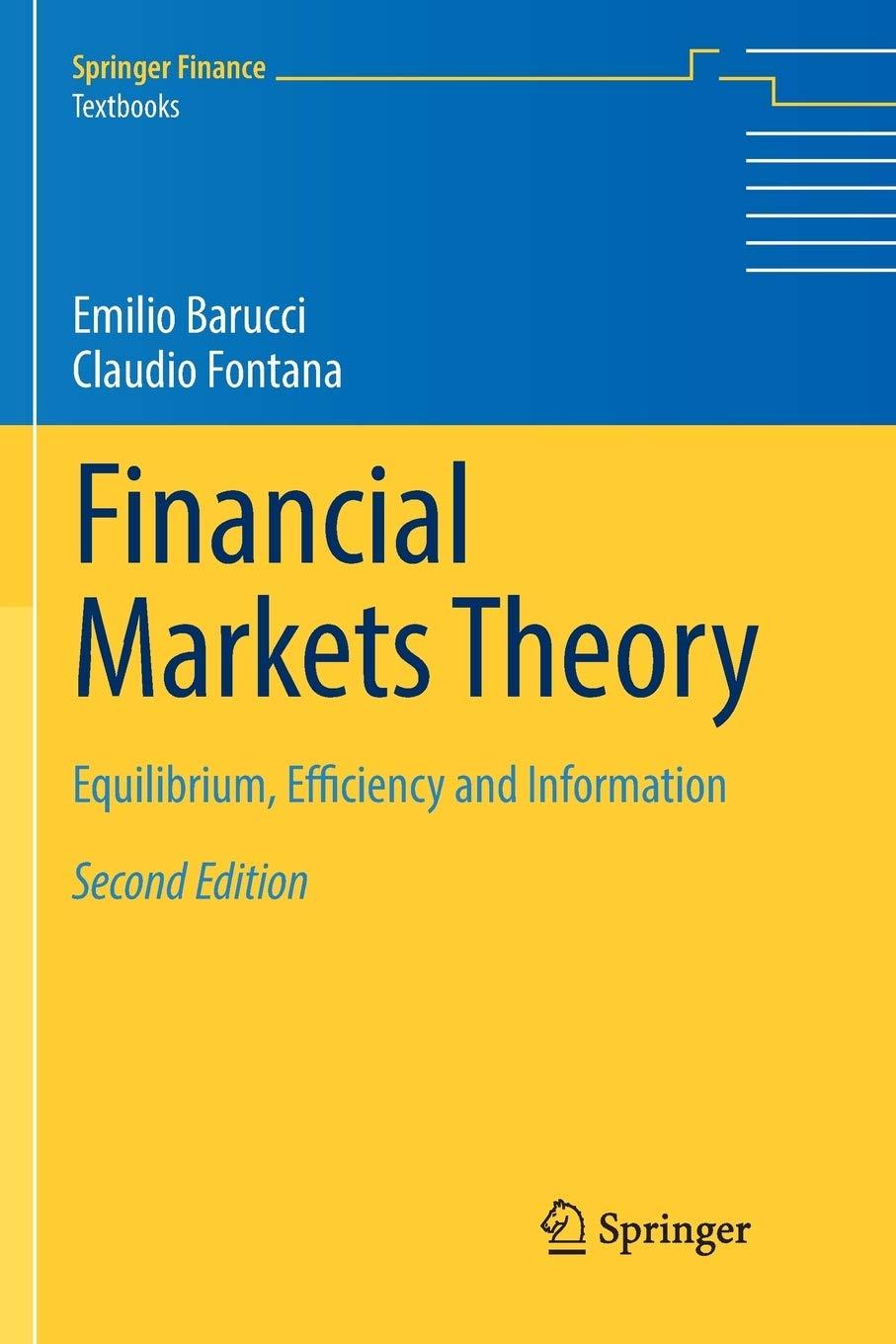Consider a representative agent economy, where the representative agent's utility function is given by (sum_{t=0}^{infty} mathrm{e}^{-delta t}left(c_{t}^{1-gamma}-1
Question:
Consider a representative agent economy, where the representative agent's utility function is given by \(\sum_{t=0}^{\infty} \mathrm{e}^{-\delta t}\left(c_{t}^{1-\gamma}-1\right) /(1-\gamma)\). Suppose that, at each period \(t+1\), a disaster event can occur with probability \(p_{t}\), with \(p_{t}\) denoting the \(\mathscr{F}_{t^{-}}\) conditional probability of occurrence, for all \(t \in \mathbb{N}\). Depending on the occurrence of a disaster, the aggregate endowment/consumption growth satisfies
\[\frac{e_{t+1}}{e_{t}}= \begin{cases}\mathrm{e}^{g}, & \text { if there is no disaster, } \\ \mathrm{e}^{g} B_{t+1}, & \text { otherwise, }\end{cases}\]
where \(B_{t+1}\) is a random variable taking values in \((0,1)\), for all \(t \in \mathbb{N}\), and \(g\) represents the logarithmic rate of growth of the aggregate endowment. Define \(R:=\delta+\gamma g\). Suppose also that the occurrence of the disaster affects the dividend process \(\left(d_{t}\right)_{t \in \mathbb{N}}\) of a risky security (whose cum-dividend price process is denoted by \(\left.\left(p_{t}\right)_{t \in \mathbb{N}}\right)\) in the following way:
\[\frac{d_{t+1}}{d_{t}}= \begin{cases}\mathrm{e}^{g_{d}}\left(1+\varepsilon_{t+1}\right), & \text { if there is no disaster } \\ \mathrm{e}^{g_{d}}\left(1+\varepsilon_{t+1}\right) F_{t+1}, & \text { otherwise }\end{cases}\]
where \(g_{d}\) is the logarithmic rate of growth of the dividend process, \(\left(\varepsilon_{t}\right)_{t \in \mathbb{N}}\) is a sequence of random variables (independent from the disaster event) with zero mean and \(F_{t}\) is a random variable taking values in \([0,1]\), for all \(t \in \mathbb{N}\). We also assume that the random variable \(\varepsilon_{t+1}\) and the random variable representing the occurrence of a disaster are \(\mathscr{F}_{t}\)-conditionally independent, for all \(t \in \mathbb{N}\). Define also the asset resilience \(H_{t}\) by \[H_{t}:=p_{t} \mathbb{E}\left[B_{t+1}^{-\gamma} F_{t+1}-1 \mid\{\text { there is a disaster at } t+1\} \vee \mathscr{F}_{t}\right]\]
and suppose that the resilience process \(\left(H_{t}\right)_{t \in \mathbb{N}}\) satisfies the following dynamics:
\[H_{t+1}=H^{*}+\frac{1+H^{*}}{1+H_{t}} \mathrm{e}^{-\phi}\left(H_{t}-H^{*}\right)+\varepsilon_{t+1}, \quad \text { for all } t \in \mathbb{N},\]
where \(H^{*}>-1\) represents a long term equilibrium resilience level and \(\left(\varepsilon_{t}\right)_{t \in \mathbb{N}}\) is a sequence of random variables (independent from all the other random variables introduced above) with zero mean.
Show that the equilibrium cum-dividend price \(p_{t}\) of the risky security is given by \[\begin{equation*}
p_{t}=\frac{d_{t}}{1-\mathrm{e}^{-r}}\left(1+\frac{\mathrm{e}^{-R+g_{d}}\left(H_{t}-H^{*}\right)}{1-\mathrm{e}^{-r-\phi}}\right), \quad \text { for all } t \in \mathbb{N} \text {, } \tag{7.20}
\end{equation*}\]
where \(r:=R-g_{d}-\log \left(1+H^{*}\right)\).
Step by Step Answer:

Financial Markets Theory Equilibrium Efficiency And Information
ISBN: 9781447174042
2nd Edition
Authors: Emilio Barucci, Claudio Fontana





